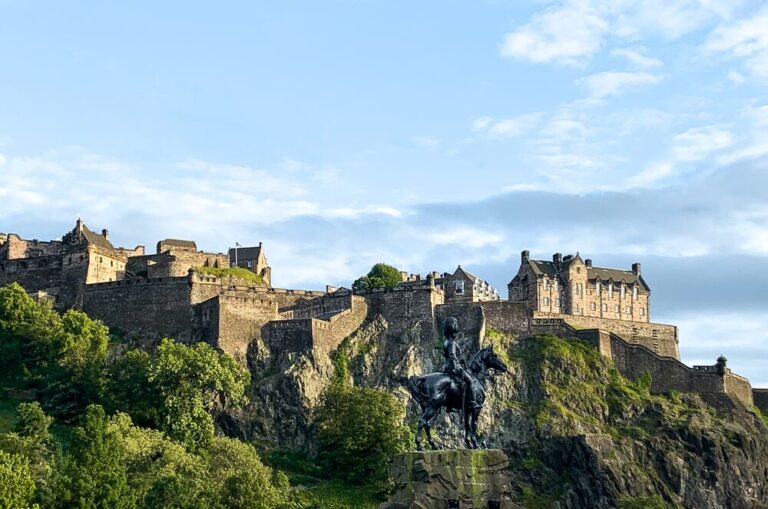Explore the Rich History of Sindh: Mohenjo Daro and Harappa

I. Introduction
A. Where is Mohenjo Daro and Harappa
Mohenjo Daro & Harappa are two of the most famous and significant archaeological sites in the world. They are located in the province of Sindh, Pakistan. These sites date back to the Indus Valley Civilization, which existed between 2600 BC and 1900 BC. Mohenjo Daro is situated in the Larkana district of Sindh, while Harappa is located in the Sahiwal district of Punjab.
B. Significance of the sites
The sites of Mohenjo Daro and Harappa are significant for several reasons. Firstly, they offer insight into the daily life, culture, and architecture of one of the earliest civilizations in human history. Secondly, they help us understand the urban planning, sanitation systems, and art and craft practices of the Indus Valley Civilization. Finally, they provide evidence of the complexity and sophistication of this ancient civilization
C. Who discovered harappa and mohenjo daro?
The discovery of these sites was the result of the efforts of several researchers in the 19th and 20th centuries. Sir Alexander Cunningham, a British archaeologist, was the first to identify the ancient site of Harappa in 1826. Later, in the 1920s, Sir John Marshall, another British archaeologist, discovered the ruins of Mohenjo Daro. The excavation of both sites has continued over the years, with many discoveries adding to our understanding of the Indus Valley Civilization.
The archaeological sites of Mohenjo Daro and Harappa are not only important historical landmarks. It also provides a unique window into the ancient past, revealing details about the Harappa and mohenjo daro religion culture and lifestyle of one of the earliest civilizations in human history.
II. Mohenjo Daro

A. Location and discovery
Mohenjo Daro is situated in the Larkana district of Sindh, Pakistan, near the Indus River. The site was discovered in the 1920s by Sir John Marshall, who was excavating in the region.
B. Historical background
Mohenjo Daro was one of the largest cities of the Indus Valley Civilization, which existed between 2600 BC and 1900 BC. The city is believed to have been inhabited by over 40,000 people and was a center of trade and commerce. The civilization had a well-developed system of urban planning, with streets and buildings laid out on a grid system.
C. Layout and architecture of the city
The layout of Mohenjo Daro was highly sophisticated, with the city divided into two parts – the Citadel and the Lower Town. The Citadel was the higher and more fortified part of the city, where the rulers and the elite lived. The Lower Town was the larger part of the city and was home to the common people.
The architecture of Mohenjo Daro was also advanced, with brick and stone buildings, underground sewage systems, and public baths. The city had a central marketplace, a great bath, and a large granary.
D. Public structures and buildings
Mohenjo Daro had several public structures and buildings, including the Great Bath. It was a large public bathing pool, the Granary, which was used for storing grains, and the Great Hall, which was a large assembly hall.
E. Artifacts and their significance
Several artefacts have been discovered in Mohenjo Daro, including pottery, jewellery, and figurines. The most significant of these are the seals, which are inscribed with the Indus script. These seals have helped scholars decipher the script and understand the language of the Indus Valley Civilization.
F. Theories on the decline of Mohenjo Daro
There are several theories on the decline of Mohenjo Daro. Some scholars believe that the city was destroyed by floods. While others suggest that it was invaded and destroyed by foreign armies. Some theories suggest that the decline was due to a combination of factors. Like environmental degradation, disease, and internal conflict. Despite the many theories, the decline of Mohenjo Daro remains a mystery.
III. Harappa

A. Location and discovery
Harappa is located in the Punjab province of Pakistan, near the Ravi River. The site was discovered in the 1920s by a team of archaeologists led by Sir John Marshall, who was also responsible for the discovery of Mohenjo Daro.
B. Historical background
Harappa was one of the major cities of the Indus Valley Civilization and is believed to have been inhabited between 2600 BC and 1900 BC. The city was a center of trade and commerce and had a well-developed system of urban planning. Harappa was also known for its skilled craftsmen and its production of pottery, jewellery, and other goods.
C. Layout and architecture of the city
The layout of Harappa was similar to that of Mohenjo Daro, with the city divided into two parts – the Citadel and the Lower Town. The Citadel was the higher and more fortified part of the city, while the Lower Town was the larger and more populous part of the city.
The architecture of Harappa was also highly advanced, with brick and stone buildings, underground sewage systems, and public baths. The city had a central marketplace, a great granary, and several public buildings.
D. Public structures and buildings
Harappa had several public structures and buildings, including the Great Granary. It was used for storing grains, the Great Bath, which was a large public bathing pool, and the Assembly Hall, which was used for meetings and gatherings.
E. Artifacts and their significance
Several artifacts have been discovered in Harappa, including pottery, jewellery, and figurines. The most significant of these are the seals, which are inscribed with the Indus script. These seals have helped scholars understand the language and writing system of the Indus Valley Civilization.
F. Theories on the decline of Harappa
The decline of Harappa is also shrouded in mystery. Some scholars believe that the city was abandoned due to environmental degradation and the depletion of resources. While others suggest that it was destroyed by invasions or internal conflicts.
One theory suggests that the collapse of the Indus Valley Civilization was due to a massive drought that lasted for several decades, leading to a shortage of food and water. Another theory suggests that the cities were destroyed by nomadic tribes from the north who invaded the region.
IV. Difference between harappa and mohenjo daro?

A. Similarities in layout and architecture
Mohenjo Daro and Harappa share many similarities in their layout and architecture. Both cities had well-planned streets, advanced drainage systems, and multi-story buildings. The Great Bath in Mohenjo Daro and the Great Granary in Harappa are two examples of the impressive public structures found in both cities.
B. Differences in culture and lifestyle
Despite the similarities in layout and architecture, there were also significant differences in the culture and lifestyle of the people. For example, both cities had sophisticated systems of writing and trade. The artefacts found in Mohenjo Daro suggest a greater emphasis on art and aesthetics. While the artefacts found in Harappa suggest a greater emphasis on utilitarian objects and tools.
Another notable difference is in the burial practices of the two cities. In Mohenjo Daro, bodies were often buried under houses or in cemeteries. While in Harappa, bodies were placed in elaborate tombs with personal possessions and offerings.
C. Comparison of artefacts and their significance
Both Mohenjo Daro and Harappa have yielded a wealth of artefacts that have provided valuable insights into the culture and society of the Indus Valley Civilization. The seals found in both cities have been particularly important, as they provide the only known examples of the Indus script. The figurines, pottery, and jewelry found in both cities also provide clues about the religious beliefs and artistic traditions of the civilization.
D. Significance of the two sites in understanding ancient civilizations
The archaeological sites of Mohenjo Daro and Harappa are among the most important in the world. They provide a window into the ancient civilization of the Indus Valley. These sites have challenged many long-held assumptions about the development of human societies, including the idea that complex urban civilizations only developed in the West.
The sites have also raised intriguing questions about the rise and fall of ancient civilizations. Why did these cities flourish for centuries and then suddenly decline and disappear? Was it due to natural disasters, invasions, or internal conflicts?
As archaeologists continue to uncover new evidence and make new discoveries, the significance of these sites will only continue to grow.
V. Preservation of the Sites

A. Efforts made to preserve the sites
The Mohenjo Daro and Harappa are important not only for their historical significance but also for their cultural value. As such, there have been concerted efforts to preserve and protect these sites for future generations. These efforts have included excavation, documentation, and conservation of the artefacts and structures found on the sites.
B. Challenges faced in preserving the sites
Despite the efforts to preserve the sites, there have been significant challenges. For one, the sites are located in a region prone to natural disasters such as floods and earthquakes. Moreover, the sites have been threatened by urbanization and development in the surrounding areas.
In addition, there have been issues related to vandalism and theft of artifacts. Some artifacts have been looted and sold on the black market, making it difficult to fully understand and appreciate the cultural and historical significance of the sites.
C. Importance of preserving the sites for future generations
The preservation of the Mohenjo Daro and Harappa sites is crucial for a number of reasons. First and foremost, these sites offer a unique window into the ancient civilization of the Indus Valley. Their preservation allows us to continue learning about and understanding this important period in human history.
Moreover, these sites serve as a reminder of the rich cultural heritage of the region and the need to protect and preserve it. By preserving the sites, we can ensure that future generations have the opportunity to learn about and appreciate this heritage.
In conclusion, the preservation of the Mohenjo Daro and Harappa sites is an important undertaking that requires ongoing efforts and collaboration between various stakeholders. By working together to protect and conserve these sites, we can ensure that their cultural and historical significance is preserved for generations to come.






